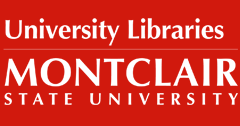Document Type
Article
Publication Date
7-10-2003
Journal / Book Title
BMC Bioinformatics
Abstract
Background: The rapid increase in the amount of protein and DNA sequence information available has become almost overwhelming to researchers. So much information is now accessible that high-quality, functional gene analysis and categorization has become a major goal for many laboratories. To aid in this categorization, there is a need for non-commercial software that is able to both align sequences and also calculate pairwise levels of similarity/identity. Results: We have developed MatGAT (Matrix Global Alignment Tool), a simple, easy to use computer application that generates similarity/identity matrices for DNA or protein sequences without needing pre-alignment of the data. Conclusions: The advantages of this program over other software are that it is open-source freeware, can analyze a large number of sequences simultaneously, can visualize both sequence alignment and similarity/identity values concurrently, employs global alignment in calculations, and has been formatted to run under both the Unix and the Microsoft Windows Operating Systems. We are presently completing the Macintosh-based version of the program.
DOI
10.1186/1471-2105-4-29
Montclair State University Digital Commons Citation
Campanella, James; Bitincka, Ledion; and Smalley, John, "MatGAT: An Application that Generates Similarity/Identity Matrices using Protein or DNA Sequences" (2003). Department of Biology Faculty Scholarship and Creative Works. 74.
https://digitalcommons.montclair.edu/biology-facpubs/74
Published Citation
Campanella, J.J., Bitincka, L. & Smalley, J. MatGAT: An application that generates similarity/identity matrices using protein or DNA sequences. BMC Bioinformatics 4, 29 (2003). https://doi.org/10.1186/1471-2105-4-29


Comments
This is an Open Access article: Verbatim copying and redistribution of this article are permitted in all media for any purpose, provided this notice is preserved along with the article's original URL.